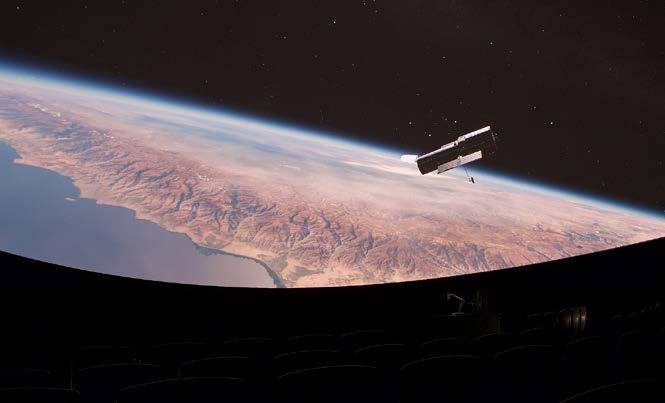
7 minute read
Universal Upgrade
One star dies, another shines more brightly in its place
Just like a star, the Pretlow Planetarium at Old Dominion University in Norfolk has reached the end of its life, and the new Michael and Kimthanh Lê Planetarium has replaced it.
Advertisement
“Not only was our Pretlow Planetarium, which was built in 1967, beginning to show its age, but our projection system had also become outdated,” said Justin Mason, Old Dominion University planetarium director. “To compete up with the other planetariums in Hampton Roads, we desperately needed an upgrade. The new Chemistry Building was in the early stages of development and this was our opportunity to include a new planetarium along with it.” Over five decades ago, the proximity of the NASA Langley Research Center inspired the creation of the Pretlow Planetarium during a time when the space program reached great popularity in the U.S.
“With NASA Langley just up the road in Hampton, the influence of the space race of the 1960s was very much felt throughout all of Hampton Roads,” said Mason. “This is the main reason why we have so many planetariums within the area: The Virginia Living Museum, TCC in Virginia Beach, Chesapeake Planetarium, Plaza Middle School, Norfolk State University, Children’s Museum of Virginia and, of course, here at Old Dominion University.”
[ by jill doczi ]
PHOTOS BY JOHN CADELL UNLESS OTHERWISE NOTED
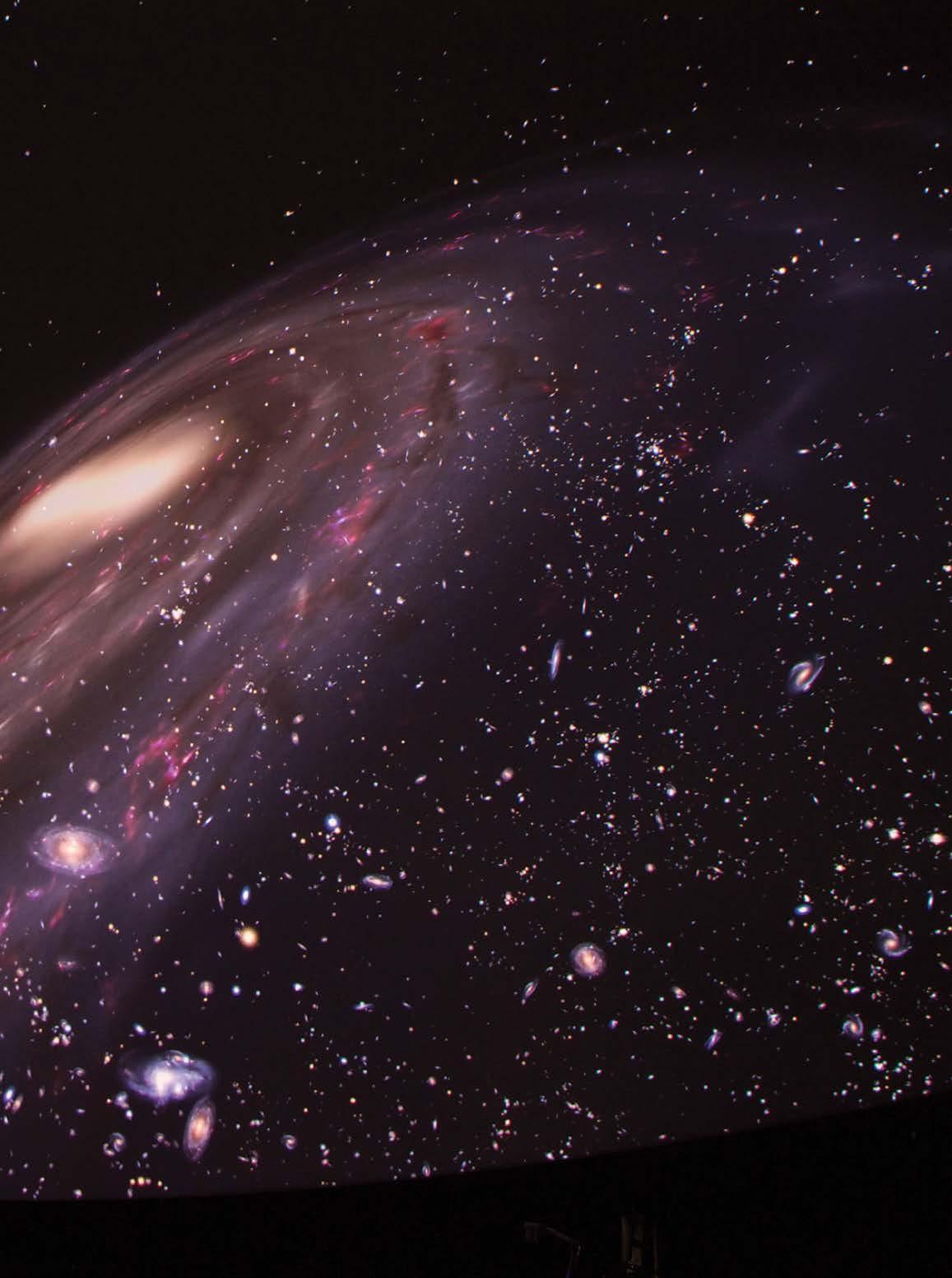
Another factor, a generous anonymous donation, brought the former Pretlow Planetarium to life. The donor wanted to remain anonymous and had the building named after a local influential figure, Mary Denson Pretlow, Norfolk Public Library’s second director. The initial planning phases for the new 110,000-square-foot replacement planetarium began in 2016 after many preliminary meetings about the building needed to accommodate both the Chemistry and Biochemistry Departments, as well as a new planetarium. Construction began in February 2019 with the building’s opening dedication held in April 2021. The dean of the College of Sciences, Gail Dodge, Ph.D., had been in contact with Michael and Kimthanh (KT) Lê about the possibility of setting up an endowment to fund undergraduate research and travel expenses for things like national conferences. Michael attended ODU in the 1980s as a computer science student. During a conversation, Michael mentioned his enthusiasm for his personal home theater and its technology. This led to conversation about a new planetarium in the works at ODU and the similar technologies involved. They became excited about the project and what a new planetarium could bring to both the college and the Hampton Roads region and committed to helping fund it. Nothing from the old planetarium transferred to the new one. The Lê Planetarium, now the second largest in the state, has a brand-new projection system, different software for rendering the universe and even a new seating arrangement. This planetarium will also serve as a digital theater— reminiscent of a movie theater. “All of our seats face in the same direction rather than concentric circles like before, and we’ve sloped the whole room,” said Mason. “Even
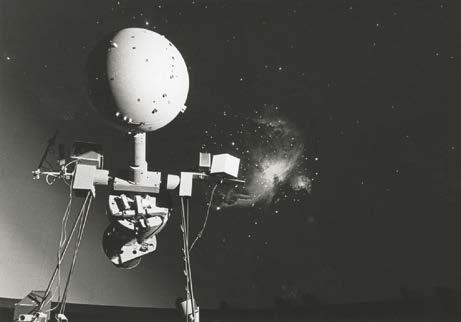
OLD DOMINION UNIVERSITY LIBRARIES
the dome. Everything is sloped about 12 degrees to bring the front of the dome down and the back of the dome up. This makes it easier on your neck as you watch a full-dome show.” Two of the things that set this planetarium apart from others include the projectors and the new software that runs our planetarium. They went from just one projector at standard HD (1920x1080 pixels) to two 4,000-pixel projectors. Each projector is also five times brighter than the previous single projector system. The projectors also use a newer technology for laser-based projection. Until recently, many laser projectors would shine lasers at a layer of phosphor to produce their light. The new projectors skip that process, saving on heat loss, power consumption and wear and tear. By using direct laser light, they have the potential to last up to 20,000 hours (or possibly even 30,000) as compared to the old projection system, which used mercury vapor lamps that would last at most 2,000 hours. The new software performs light-years ahead of the previous system and provides the biggest upgrade to the new facility. The increase in graphics and processing power allows it to do much more than before. Created by Evans & Sutherland, a Salt Lake City-based company, Digistar has led the way in planetarium software for years. The most recent version of the software, Digistar 7, released in fall of 2020, reimagines what it takes to run a planetarium and creates an incredible, immersive experience. It includes many new and updated features: • A 3D model of the Milky Way Galaxy built from the GAIA star catalog with nearly one billion stars • The ability to project a hyperrealistic, accurate version of the night sky • Free-flight navigation through the universe using a gaming controller • When flying over the Earth it pulls in ArcGIS data for the terrain, similar to Google Earth. As the spectators
“fly” over ODU’s campus, they can spot each individual building and even find home plate at the Bud
Metheny Baseball Complex. • Domecasting enables any Digistar 6 and 7 system in the world to broadcast live dome presentations to other Digistar users. • Live interaction allows drawing freehand on any image on the dome. • Digistar’s Cloud Library constantly adds new, free materials to its servers. This gives immediate access to new content such as spacecraft models, renderings of planet surfaces and animated flybys around black holes. As science updates in the real world, other Digistar users create free content to download and bring to the shows. Additionally, as a university planetarium, it has direct access to the world of academia and research. “I can leave my office, walk upstairs and knock on a professor’s
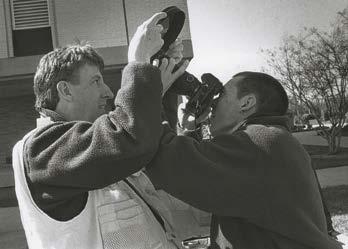

door to invite them to give a talk,” said Mason. “Planetariums are no longer just dedicated to astronomy and space exploration. As many have started using digital projectors, we now have the capability to show off many aspects of science. At a university, I can quickly and easily reach out to leading experts in physics, oceanography, climate change, chemistry, biology, computer science and more. The wealth of knowledge available in a university setting is remarkable, and we have a working relationship with many of the departments on campus.” Primarily, the new planetarium will serve as a lecture hall for ODU students with a design that mimics a lecture hall setting so many different classes can occur under the dome. The Digistar 7 software also has many multidisciplinary tools. In addition to all things astronomy, it can access NASA’s Science on a Sphere data, 3D models of molecules can be projected onto the dome and even biology lessons can use the skeletal system it has pre-rendered in the software. Outside of classes, the unique setting can serve as a location for seminars, public talks, public lectures and awards ceremonies. Several graduate students have already defended their doctoral dissertations in the facility. Beyond the university population, the Lê Planetarium will also have offerings for the general public. “Our first goal is to get back to normal operations,” said Mason. “This would include bringing back our weekly public shows, the monthly Bad Movie Night series and showing off our new laser light shows. Our fingers are crossed for opening at full capacity with the start of ODU’s fall semester in late August. We’re eager to be able to get back to giving shows and teaching the public about all things STEM.”
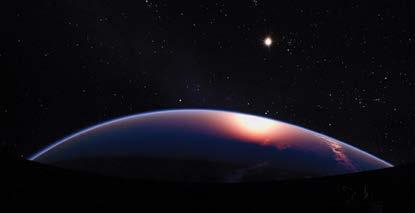
What will happen to the Pretlow Planetarium? The salvageable parts of the Pretlow will move to storage. The staff at ODU hopes to reach out to other local planetariums to see if they have interest in the equipment such as the projection or sound systems. “The one, very popular question we get is, ‘What will happen to the seats?’ We have these amazing, 8-foot-long, curved benches that are the original seats from 1967,” said Mason. “Many people want one for their homes. We’re working on a possible fundraiser by selling the seats.” In the short term, the Pretlow building still has some useful life left, just not as a planetarium. “The building will be on campus for another few years, but it just will not be a planetarium,” said Mason. “It will serve as storage for the Barry Art Museum. They love the space because there are no windows and, therefore, no chance of sunlight damaging the artwork. However, eventually, it will get torn down. When that happens, the Pretlow Planetarium will, sadly, be no more.”
Jill Doczi has written and edited in public relations, marketing and journalism for a lifetime, forever trying to earn the respect of her journalism instructors. She resides in Virginia Beach.
Hubble telescope captures the views of South Africa To find out more about happenings at the planetarium visit the website: www.odu.edu/planetarium for a calendar of upcoming events. You can also follow on social media for more info. and the occasional astronomy articles. FACEBOOK: www.facebook.com/ oduplanetarium TWITTER: @ODUPlanetarium INSTAGRAM: @ODUPlanetarium
